UNITED STATES INSTITUTE OF PEACE http://www.usip.org SPECIAL REPORT.
The history of laws affecting women’s rights and empowerment in Pakistan involves a complex pattern of advances and setbacks, with the state’s efforts to articulate a definition of women’s rights complicated by the need to balance divergent views on the place of women in Pakistani society. • After General Pervez Musharraf’s 1999 coup, a number of factors, including international perceptions of Pakistan, brought women’s rights, greatly curtailed by General Zia-ul-Haq’s Islamization project, to the fore. Most critical among the changes to women’s rights during this period was the 2006 revision to the Hudood Laws, resulting in the Protection of Women Act.
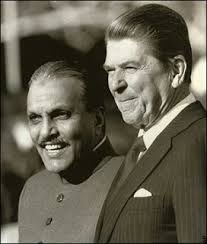

• The incumbent Pakistan People’s Party government has passed several important pieces of legislation continuing the progress for women’s empowerment made under Musharraf. These new laws focus on sexual harassment at the workplace, antiwomen practices, and acid throwing. Additionally, the National Commission on the Status of Women has recently achieved elevated status. • Despite these advancements, new legislation is needed to address ongoing challenges such as women’s ability to control inherited land and human trafficking. If the Pakistani state is to make lasting improvements on these and other challenges facing the legal status of Pakistani women, it must find solutions that will not only benefit women in the country but create consensus among Pakistanis on the best and most achievable way to prioritize global rights for women while adhering to Islamic precepts.Consensus remains elusive in identifying what constitutes women’s rights and which legal reforms can best secure these rights in Pakistan. Ongoing political crises have important ramifications for promoting legislation to secure women’s rights, including banning forced marriages and marriage in exchange for vengeance, reversing discriminatory inheritance practices, and countering sexual harassment and domestic violence. The current Pakistan People’s Party (PPP) administration actively uses the rhetoric of advocating for women’s empowerment, but its track record in advancing these rights thus far remains limited. Many of the recent legal reforms associated with ensuring women’s rights clearly are counter to what the majority of Islamist political groups argue is necessary to secure them. The empowerment of women in Pakistan can be considered in a variety of contexts, but none is more critical than law: how women’s legal rights are framed is fundamental to considering how best to advance women’s empowerment. After describing women’s legal rights in Pakistan, this report reviews key features of recent legislation affecting women’s rights, explores the controversies surrounding this legislation, and elaborates on ongoing challenges to develop further legislation, particularly in light of opposition from Islamist groups. Achievements thus far have qualitatively moved forward the legal empowerment of women in Pakistan, but far more must be done to enable the laws passed to be implemented, bring Pakistan into conformity with the goals and ideals of the UN Committee on the Elimination of Discrimination Against Women (CEDAW), and create an environment in which all women in Pakistan, regardless of class, can make viable choices in their lives. Legal Reform and Women’s Empowerment The very concept of women’s rights elicits disparate, conflicting images in contemporary Pakistan. What constitutes women’s rights, who defines them, and where responsibility lies for ensuring them is highly contested, and there appears to be little room for compromise among the contending sides. To some extent, the tension has existed since Pakistan’s founding, but the past few years have seen the disagreements destabilize Pakistan’s political and social cohesiveness.


The state has undertaken the difficult task of constructing culturally appropriate definitions of women’s rights as well as culturally acceptable mechanisms for implementing them, but with problematic results. Thus Pakistan persists as an amalgamation of often contradictory political enterprises, with two cohesive strands articulating divergent views on the rights of women and rhetoric to incorporate more laws and institutions derived from Islam. The state’s efforts to define women’s rights are compelling, especially considering that the prevailing social climate—since at least 1979 if not before—has set the discourse within an Islamic framework. Pakistan’s traditional context, which encourages women to remain in the home, was strengthened under General Zia-ul-Haq’s government. His Islamization program, initiated in 1979, as well as the proliferation of deeni madaris (religious schools) throughout the country further excluded women from public life. Women found themselves in a weakened position and at a marked disadvantage in Pakistan’s national arena; the legal structure resulting from the Islamization program placed women in decidedly unequal political positions to men. On the other hand, 1979 also saw the formation of the Women’s Division—the precursor to the now-devolved Ministry of Women’s Development—further aggravating the contradictory stances in Pakistan regarding women’s rights. These institutions represent markedly different visions for women’s rights in Pakistan, and there has been no substantive internal debate to clarify the contradictions and articulate more clearly what women’s rights should look like. The argument over what constitutes acceptable roles and rights for women finds different constituencies deeply divided. The debate has been particularly pointed over the past few years as Pakistan has returned to reserving parliamentary seats for women, revised the Hudood Laws that resulted in the Protection of Women Act 2006, and submitted and successfully defended its CEDAW report before the Division for the Advancement of Women at the United Nations in spring 2007. Meanwhile, terrorists continue to attack girls’ schools and seek to limit women’s actions and rights in very violent ways, and a recent decision of the federal Shariat Court declared four sections of the Protection of Women Act un-Islamic and therefore unconstitutional.1 Culture and religion are inextricably intertwined in many ways in Pakistan, and there is a great deal of confusion over where lines can be drawn between them. Members of the Sipahe-Sahaba, the Jama’at-i-Islami, the Pakistan Taliban,2 and many graduates of deeni madaris
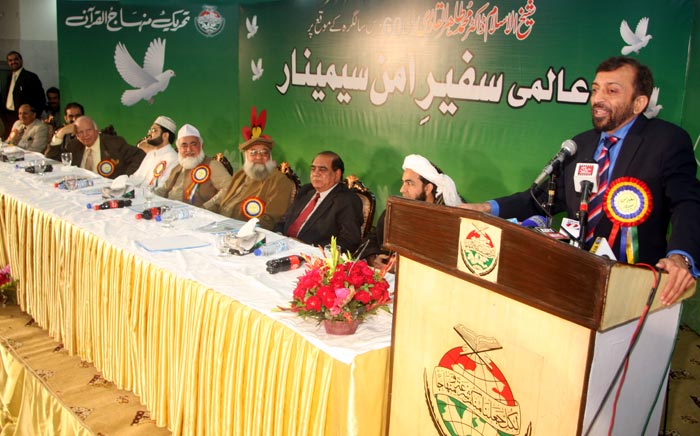
(religious schools) experience their Muslim identity as inseparable from other parts of their culture. Thus, things not in accordance with cultural norms, values, or practices are often considered as contradicting Islam. Alternatively, members of various women’s rights groups such as Shirkat Gah, Simorgh, and the Aurat Foundation engage in activist research addressing the rise in domestic violence, female education, and women’s political participation, questioning Islam’s jurisdictional space in the contemporary political sphere. These groups challenge notions that women’s rights need to be limited by Islamic injunctions. The quandary over ensuring women’s rights in Pakistan is closely tied to the need for a consensus that women in Pakistan have a right, in the words of Moroccan sociologist Fatima Mernissi, to design a future instead of just growing old.3 Sometimes this means enforcing specific rights that women are presumed to enjoy in Pakistan because they are in accordance with sharia, such as retaining inherited land or divorcing abusive husbands, and establishing new rights to protect women from traditional practices such as swara and karo-kari, 4 domestic and public violence, and other practices through which women bear the consequences for wrongs committed by others. For the state, finding a way to balance these opposing political forces in Pakistan is challenging as it confronts its own progressive and Islamist oppositions. What is acceptable within Islam—especially pertaining to women and their rights—may not be acceptable within prevailing cultural constructs, and it is unclear which arena will win out as the defining social construct that frames women’s rights. This process, replete with its own contradictions, is still evolving. This report thus informs larger theoretical questions about the relation between gendered citizenry and the modern state, particularly in Muslim contexts, and how local transformations have global underpinnings. Pakistan is grappling with the construction of what can be termed gendered modernity, whereby the country becomes increasingly urban with greater numbers of educated women, many of whom are no longer willing to tolerate discriminatory social practices and laws—even as conservative religious groups aggressively promote seemingly irreconcilable stances on women’s rights. Ensuring rights is only possible when they are supported by laws and policies that enshrine and enforce them; hence the importance of examining Pakistan’s legal framework. It is in this domain, therefore, that this report concentrates. The most critical arenas impacting women’s legal rights in Pakistan today lies in developing legislation affecting women’s general rights as citizens and family members; women’s economic rights and opportunities to earn an income; ensuring women’s safety as they enter public domains; and establishing new laws to protect women from harmful and discriminatory traditional practices. Implementing the laws is obviously important, but implementation only becomes a concern once the laws exist. The crossroads Pakistan has reached is an important one. What has this elected government prioritized—and what can and will it prioritize—to promote women’s rights? Historical Backdrop on Women’s Legal Rights At Pakistan’s founding in 1947, there was little legal distinction between the rights that women and men enjoyed, consistent with the larger contours of the state’s project to ensure the country’s existence in the decade following partition. Ideological concerns such as those that rose to prominence in the 1970s and 1980s were a luxury Pakistan could not afford in the 1950s, when it faced threats to its survival. In Pakistan’s quest to become a recognized member of the international community, the state became party to a number of UN human rights instruments. One of the first was the 1953 Convention on the Political Rights of Women.5 In the late 1950s, in the decision to ratify the UN Convention on the Consent to Marriage, Minimum Age for Marriage and Registration of Marriage, the state, under Field Marshal Ayub Khan (1958–69), saw it as an opportunity to modify Pakistan’s legal framework and modernize the country. The task at hand—how to ensure women’s rights within the family—offered Pakistan a chance to craft distinct legislation. This opportunity resulted in the 1961 Muslim Family Laws Ordinance (MFLO).
The MFLO gives economic and legal protection to women by regulating marriage and divorce and restraining polygamy. It requires registration of all marriages, the written permission of a man’s wife (or wives) to be presented before an arbitration council to decide if the man may marry again, the abolition of divorce by simple repudiation (talaq), and other safeguards for women in the event of divorce. With the MFLO, for the first time, the Pakistani state guaranteed women’s rights in the country through codified safeguards. Women activists were so jubilant following the passage of this legislation that they are said to have showered Ayub Khan’s car with rose petals when he came to Karachi. The next major legislation affecting women’s legal rights in Pakistan was its 1973 constitution, which advanced women’s legal rights in the country on a number of fronts. It affirms in its fundamental rights and principles that the state is committed to eliminating exploitation. Article 25 (1) guarantees that all citizens are equal under the law and are entitled to equal protection of law; Article 25 (2) adds, “There shall be no discrimination on the basis of sex.” Article 27 prohibits discrimination on the basis of sex, race, religion, or caste for government employment. Finally, Article 34 in the principles of policy section states that “steps shall be taken to ensure full participation of women in all spheres of national life,” and Article 38(a) adds that it is the responsibility of the state to “secure the well-being of the people, irrespective of sex, caste, creed, or race, by raising their standard of living.”6 Six years later, however, General Zia-ul-Haq’s restructuring of Pakistani national identity placed previously unimagined limitations on women’s personal and professional lives. On February 2, 1979, a year and a half after coming to power in a coup d’état, Zia declared that he would again delay elections to follow a higher mandate and ensure that all laws in Pakistan conformed with Islamic precepts and principles. Zia-ul-Haq’s introduction of an “Islamic system in the country”7 created a unique controversy, as the state never initiated a public discussion on what such a system would entail, and in doing so, superseded the constitutionally mandated Council of Islamic Ideology, which was tasked to define such a system. The Hudood Laws, heralded as the foundation of Zia’s new system but essentially just a new penal code, focused on enforcing punishments for distinct crimes explicitly outlined in sharia, such as theft of private property, the consumption of intoxicants, and adultery and fornication (zina). The most heated controversy concerned the last element, both because the ordinance governing it made no legal distinction between adultery and rape and because the structure of enforcement discriminated against women.8 Four years later, Zia’s government promulgated the Law of Evidence, which critics charged would disallow women from testifying at all in certain cases and would cause their testimony in other cases to be irrelevant unless another woman corroborated it. The restrictions on women’s testimony have been upheld only in cases concerning economic transactions, but the law broke new legal ground in Pakistan in that it clearly gave men and women different legal rights, underscoring that the state did not regard women and men as equal actors.
Will not accept Asma Jahangir as caretaker PM: Imran LAHORE: Pakistan Tehrik-i-Insaf (PTI) chairman Imran Khan on Monday said that his party will not accept the appointment of prominent social activist and former Supreme Court Bar Council chairman Asma Jahangir as caretaker prime minister. Speaking at a press conference in Lahore on Monday, Khan alleged that the Pakistan People’s Party (PPP) and the Pakistan Muslim League – Nawaz (PML-N) have entered into a deal among themselves. Rejecting any chance of participating in the PML-N’s protest march in Islamabad, the PTI chief said that there was no chance that the two parties could enter into a pact with one another. Khan said that, instead of protesting with the PML-N, his party would hold a separate protest demonstration. Moreover, the PTI chief rubbished talks of carving a new province out of south Punjab, rejecting it as mere a “election stunt”. Khan again called for President Asif Ali Zardari’s resignation, reiterating his stance that polls could not be ‘free and fair’ with Zardari as president. Khan said that the PTI would accept the chairman Senate as acting president in case of President Zardari’s resignation. Khan further reassured that the PTI would not boycott the general elections, and vowed that his party would achieve success in the upcoming polls. REFERENCE: Will not accept Asma Jahangir as caretaker PM: Imran 28th January, 2013 http://dawn.com/2013/01/28/will-not-accept-asma-jahangir-as-caretaker-pm-imran/
In the same year the government introduced its Islamization program, it also established the Women’s Division. The division’s creation is emblematic of the country’s struggle to resolve the conflict between the push toward modernity and the pull of redefined tradition: concurrent with codifying inequalities between men and women, the state actively began seeking means to improve women’s standard of living to be on par with international standards. The Women’s Division’s successor, the Ministry for Women’s Development, was instrumental in preparing Pakistan’s national report for the United Nations’ 1995 4th World Conference on Women in Beijing, as well as the follow-up project to implement the promises made in Beijing, entitled the National Plan of Action. It also helped prepare the Beijing +5 Report for the May 2000 conference at UN headquarters and monitored Pakistan’s progress in implementing CEDAW.9 Pakistan began to turn its attention back to women’s rights in the 1990s, predominantly through actions aimed at an external audience. Pakistan became a state party to the UN Convention on the Rights of the Child in 1990 and signed on to the 1993 Vienna Declaration recognizing women’s rights as human rights,10 the 1994 Cairo Population and Development conference’s Programme of Action, and then to the 1995 Platform for Action in Beijing. In 1994, when Pakistan was preparing its national report for the upcoming Beijing conference, Pakistan’s senate decided to establish a “high-powered commission” to review the country’s laws as “a step toward ending the grosser iniquities against women.” The resultant Report of the Commission of Inquiry for Women starkly condemned conditions that existed for women in Pakistan at that time: There is a widespread misconception about the place Islam accords to women, which is not just a distortion spread in the West but it exists even among the intelligentsia in the Muslim World, including Pakistan. It is believed that Islam relegates women to an inferior status; it confines them inside the four walls of their homes; and it restrains them from taking up employment outside their homes or running their own business. This is wholly contrary to fact.11 Quite provocatively for that era, the report notes that many of the derogatory laws and customs in Pakistan are, unfortunately, justified in the name of Islam or have been introduced as Islamic laws when clearly they are retrograde customs and traditions, or ill-informed interpretations that bear no relation to the divine design. This distinction has to be clarified once and for all. Ambiguity allows obscurantist elements to re-open debate on settled fundamental principles, and gives rise to insecurity among women within and to an extremely adverse image abroad.12 During the governments of Benazir Bhutto and Nawaz Sharif (1988–99), however, little was done to correct the ambiguities the commission identified. The absence of attention to women’s rights during Bhutto’s first term as prime minister—she was the first woman to serve in this role—disappointed many who had expected her to pass new legislation or repeal the Hudood Laws given her campaign promises. Political exigencies subordinated these women’s rights promises to other political maneuvers; Bhutto’s resolve to release women imprisoned under the Hudood Laws was limited to those already sentenced and did not affect the vast majority of women who were awaiting trial.13 Women’s Rights Reenter the Legal Spotlight Women’s rights legislation came under new scrutiny following General Pervez Musharraf’s rise to power in a coup d’état in October 1999. 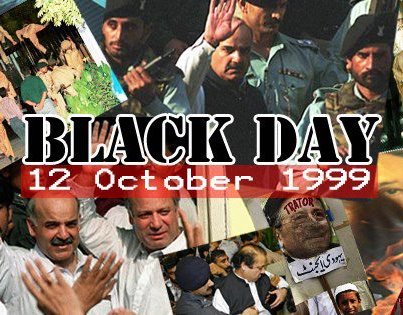 Musharraf provided a glimpse of his future priorities by appointing a female activist as minister of state for education and the popular social activist Omar Asghar Khan to his cabinet. Shortly before Musharraf’s government was finally ready to file Pakistan’s first CEDAW report,14 al-Qaeda carried out its terrorist attacks on September 11, 2001, and the war in Afghanistan began. While considering various strategies and priorities to promote women’s rights in Pakistan, the state determined it had to take a step back and first articulate a national policy on women.15 In the latter half of 2001 and in 2002, it held provincial meetings with local stakeholders—government bureaucrats, elected officials, and activists—to create consensus on key themes to promote women’s empowerment. However, the language resembles the requirements of CEDAW, using the terminology of “creating enabling conditions,” which suggests that the Pakistani government’s concerns were more with its international reputation than with promoting substantive domestic transformation. The provincial meetings affirmed that Pakistan did not condone discrimination against women at the constitutional level. However, agreement on the definition of what constitutes women’s rights appeared to end when some legislators attempted to introduce more specific, acceptable laws. As traditional views toward women’s roles in society were being championed in many domains—for example, in the Jama’at-i-Islami’s ongoing opposition to the 1961 Muslim Family Laws Ordinance—substantive changes were simultaneously occurring throughout the country in social practices, orientations, and values. Across class and regional lines, greater numbers of females were being educated, driving automobiles, entering the workforce, and standing for election in local contests. Conflicting images regarding the place and power of women were now having widespread social, economic, and political consequences. On March 8, 2002—International Women’s Day—
Musharraf provided a glimpse of his future priorities by appointing a female activist as minister of state for education and the popular social activist Omar Asghar Khan to his cabinet. Shortly before Musharraf’s government was finally ready to file Pakistan’s first CEDAW report,14 al-Qaeda carried out its terrorist attacks on September 11, 2001, and the war in Afghanistan began. While considering various strategies and priorities to promote women’s rights in Pakistan, the state determined it had to take a step back and first articulate a national policy on women.15 In the latter half of 2001 and in 2002, it held provincial meetings with local stakeholders—government bureaucrats, elected officials, and activists—to create consensus on key themes to promote women’s empowerment. However, the language resembles the requirements of CEDAW, using the terminology of “creating enabling conditions,” which suggests that the Pakistani government’s concerns were more with its international reputation than with promoting substantive domestic transformation. The provincial meetings affirmed that Pakistan did not condone discrimination against women at the constitutional level. However, agreement on the definition of what constitutes women’s rights appeared to end when some legislators attempted to introduce more specific, acceptable laws. As traditional views toward women’s roles in society were being championed in many domains—for example, in the Jama’at-i-Islami’s ongoing opposition to the 1961 Muslim Family Laws Ordinance—substantive changes were simultaneously occurring throughout the country in social practices, orientations, and values. Across class and regional lines, greater numbers of females were being educated, driving automobiles, entering the workforce, and standing for election in local contests. Conflicting images regarding the place and power of women were now having widespread social, economic, and political consequences. On March 8, 2002—International Women’s Day—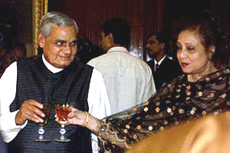 Musharraf announced the establishment of an autonomous National Commission for Women and offered that, with the passage of time, Pakistan would gradually see an increase in the number of seats reserved for women in national and provincial assemblies. He noted the concrete steps his government had already taken to ensure the representation of women in the country. They had reserved 180 seats for women in national and provincial assemblies, a third of seats in local government elections likewise had been reserved, and now the National Commission for Women would work “for the protection of women’s rights in the country.”16 He also announced a three-month amnesty for women prisoners involved in minor crimes, which affected the large number of women detainees incarcerated under zina charges under the Hudood Laws.17 These laws were increasingly condemned internationally and were criticized in many reports on human rights violations. A U.S. Department of State report on Pakistan contended that Women frequently are charged under the Hudood Ordinances for sexual misconduct, such as adultery. A Hudood law meant to deter false accusations is enforced weakly, and one human rights monitor claimed that 80 percent of adultery-related Hudood cases are filed without supporting evidence. In 1998, approximately one-third of the women in jails in Lahore, Peshawar, and Mardan were awaiting trial for adultery; that percentage likely remains accurate. Most women tried under the ordinance are acquitted, but the stigma of an adultery charge alone is severe.18 That being raped in Pakistan could itself be a crime hurt Pakistan’s global image immensely. Musharraf’s government passed laws to rectify this poor image, including the Criminal Law (Amendment) Act of 2004 (enforced in early 2005)—popularly referred to as the “honor killing law,”19 as it enhanced punishments for honor killings as a deterrence— followed by the federal government’s efforts to modify the Hudood Laws by passing the Protection of Women Act 2006,20 placing the crimes of rape and adultery back into Pakistan’s penal code. The act of being raped was finally no longer a crime in Pakistan. The Protection of Women Act was the culmination of the women’s rights activism that had begun shortly after Zia introduced his Islamization program in early 1979. Reform of the Hudood Laws had been set in motion when Pakistan became party to the CEDAW Convention in 1996, pledging to review existing laws and social institutions to eliminate discrimination against women. But little was done until Musharraf’s government revived the issue of women’s empowerment as a key component of its policies to promote Pakistan’s progress. In all, Musharraf’s quotas for government seats amounted to 5 percent for women in
Musharraf announced the establishment of an autonomous National Commission for Women and offered that, with the passage of time, Pakistan would gradually see an increase in the number of seats reserved for women in national and provincial assemblies. He noted the concrete steps his government had already taken to ensure the representation of women in the country. They had reserved 180 seats for women in national and provincial assemblies, a third of seats in local government elections likewise had been reserved, and now the National Commission for Women would work “for the protection of women’s rights in the country.”16 He also announced a three-month amnesty for women prisoners involved in minor crimes, which affected the large number of women detainees incarcerated under zina charges under the Hudood Laws.17 These laws were increasingly condemned internationally and were criticized in many reports on human rights violations. A U.S. Department of State report on Pakistan contended that Women frequently are charged under the Hudood Ordinances for sexual misconduct, such as adultery. A Hudood law meant to deter false accusations is enforced weakly, and one human rights monitor claimed that 80 percent of adultery-related Hudood cases are filed without supporting evidence. In 1998, approximately one-third of the women in jails in Lahore, Peshawar, and Mardan were awaiting trial for adultery; that percentage likely remains accurate. Most women tried under the ordinance are acquitted, but the stigma of an adultery charge alone is severe.18 That being raped in Pakistan could itself be a crime hurt Pakistan’s global image immensely. Musharraf’s government passed laws to rectify this poor image, including the Criminal Law (Amendment) Act of 2004 (enforced in early 2005)—popularly referred to as the “honor killing law,”19 as it enhanced punishments for honor killings as a deterrence— followed by the federal government’s efforts to modify the Hudood Laws by passing the Protection of Women Act 2006,20 placing the crimes of rape and adultery back into Pakistan’s penal code. The act of being raped was finally no longer a crime in Pakistan. The Protection of Women Act was the culmination of the women’s rights activism that had begun shortly after Zia introduced his Islamization program in early 1979. Reform of the Hudood Laws had been set in motion when Pakistan became party to the CEDAW Convention in 1996, pledging to review existing laws and social institutions to eliminate discrimination against women. But little was done until Musharraf’s government revived the issue of women’s empowerment as a key component of its policies to promote Pakistan’s progress. In all, Musharraf’s quotas for government seats amounted to 5 percent for women in
government service (now 10 percent), 17 percent for women in national and provincial parliaments, and 33 percent for women in most tiers of local government. It formalized the National Commission on the Status of Women, sought national consensus on a National Policy on Women, and set in motion a series of reforms to promote women’s rights consistent with the global norms articulated in the CEDAW Convention. Musharraf’s reforms are not surprising. In the 1960s, Ayub Khan’s vision was to modernize Pakistan, especially in promoting economic development and the writ of the state. Providing women with immutable rights—especially in marriage, divorce, inheritance, and custody—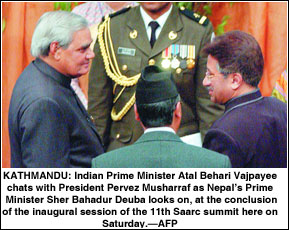
was essential to promoting this transformation. Zia-ul-Haq in the 1970s and 1980s symbolically moved Pakistan closer to the Middle East, not by prioritizing sharia, but by incorporating laws and practices that had not been a part of Muslim traditions in South Asia. South Asian women historically have had greater agency than their Arabian counterparts— Hanafi fiqh (jurisprudence) ensures this more than the Hanbali and its Wahhabi derivative do—but in the state’s quest to find a basis of legitimacy for itself, it trod on the legal rights of women.21 In strengthening women’s rights, Musharraf’s goals were quite similar to Ayub Khan’s, but the work was done in a very different global context. First, as a global community, no nation can move forward and prosper without bringing its women along in the process, as Pakistan’s founder, Quaid-e-Azam Muhammad Ali Jinnah, averred in 1947. Educated women have smaller, healthier families and contribute economically, politically, and socially to their countries. Second, the pervasive globalization of the economy limits any one country’s ability to assert itself in external economic negotiations; the more a local economy can strengthen itself—
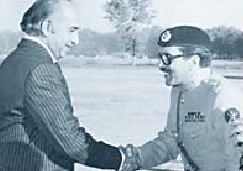
which includes incorporating qualified women into the mix—the better its prospects when it looks outward. Finally, in the wake of September 11, Pakistan was forced to reconsider its place in the global community. Musharraf’s promotion of women’s rights thus can be seen as an effort more to improve Pakistan’s standing in the international community than to improve women’s legal standing in Pakistan. Musharraf’s government often used language that resembles the requirements of CEDAW, such as the aforementioned terminology of “creating enabling conditions.” Domestic friction, however, between the conflicting images regarding the place and power of women in Pakistani society complicated the process of developing specific and articulate laws capable of addressing international and domestic expectations. While Pakistan did not condone discrimination against women at the constitutional level, how could it set about and develop workable and acceptable laws? The process to modify the Hudood Laws began in June 2006 when Musharraf’s government invited four “esteemed religious scholars” to develop recommendations to amend them.22 By the end of the month, the Council of Islamic Ideology had recommended the state rewrite the Hudood Laws “to conform with the intents of Qur’an, Sunnah, and Sharia”23 and incorporate the reframed law in Pakistan’s penal and criminal procedure codes. Musharraf then directed the council to draft a formal amendment to the Hudood Laws. In the following weeks, debates were held throughout the country with the general consensus that the laws had to be reformed, especially those concerning zina. 24 By early August, the federal cabinet approved draft amendments and set up a five-member ministerial committee to table it in the national assembly. A key priority was the removal of zina bil jabr (adultery without consent) entirely, and the movement of the provision regarding zina to Pakistan’s penal code. Provisions would be included to prevent malicious, baseless charges of zina, and if a charge filed would be found to be groundless 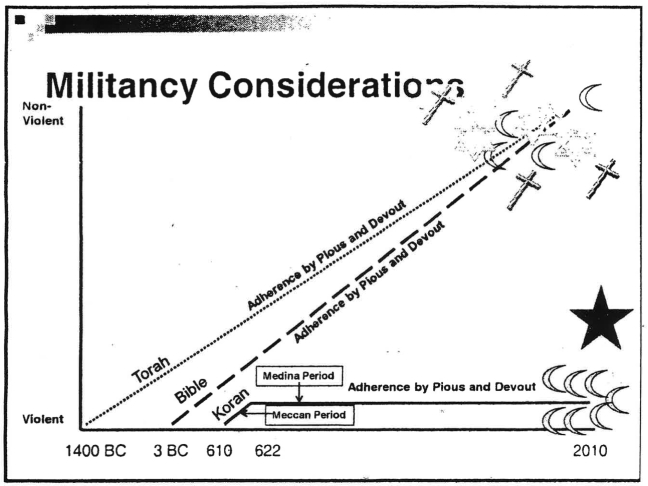 (or if the woman was not found guilty), the charge of qazf (false accusation of zina) would then apply to the person making the charges. The federal government tabled the bill—the Protection of Women Bill 2006—on August 20, 2006. Opposition Islamist political parties, led by the Jama’at-i-Islami, lodged an immediate outcry against the reforms, charging that the Hudood Laws were a viable Islamic document and that the reforms “would encourage adultery in society and would further increase obscenity, vulgarity, and western culture in Pakistan.”25 In response to the Jama’at’s protests, the national assembly charged that a select committee would review all thirty clauses of the bill; most political parties supported this, except for the Jama’at and its allies. Jama’at leaders claimed that the bill would cancel the Hudood Laws without providing any protection to women; through the bill, Pakistan was being Westernized; and Musharraf was “targeting the Islamic ideology, the Two Nation theory and the sovereignty of Quranic laws in the name of so-called enlightened moderation only to please the U.S.”26 Identity politics seem to have motivated these charges. Ultimately however, Musharraf prevailed, and the bill became law in November 2006. A third initiative on women’s rights—the Prevention of Anti-Women Practices (Criminal Law Amendment) Bill 2006—sought to end the “social, political, and religious excesses against women” by banning practices such as forced marriages, marriage in exchange for vengeance, and deprivation of women’s inheritance. The national assembly decided to cease its review of the bill, first submitted in February 2007, two years later in spring 2009, a year after the PPP came to power. The assembly claimed that the bill was insufficient and poorly scripted and that other legislation would instead be forthcoming.
(or if the woman was not found guilty), the charge of qazf (false accusation of zina) would then apply to the person making the charges. The federal government tabled the bill—the Protection of Women Bill 2006—on August 20, 2006. Opposition Islamist political parties, led by the Jama’at-i-Islami, lodged an immediate outcry against the reforms, charging that the Hudood Laws were a viable Islamic document and that the reforms “would encourage adultery in society and would further increase obscenity, vulgarity, and western culture in Pakistan.”25 In response to the Jama’at’s protests, the national assembly charged that a select committee would review all thirty clauses of the bill; most political parties supported this, except for the Jama’at and its allies. Jama’at leaders claimed that the bill would cancel the Hudood Laws without providing any protection to women; through the bill, Pakistan was being Westernized; and Musharraf was “targeting the Islamic ideology, the Two Nation theory and the sovereignty of Quranic laws in the name of so-called enlightened moderation only to please the U.S.”26 Identity politics seem to have motivated these charges. Ultimately however, Musharraf prevailed, and the bill became law in November 2006. A third initiative on women’s rights—the Prevention of Anti-Women Practices (Criminal Law Amendment) Bill 2006—sought to end the “social, political, and religious excesses against women” by banning practices such as forced marriages, marriage in exchange for vengeance, and deprivation of women’s inheritance. The national assembly decided to cease its review of the bill, first submitted in February 2007, two years later in spring 2009, a year after the PPP came to power. The assembly claimed that the bill was insufficient and poorly scripted and that other legislation would instead be forthcoming.
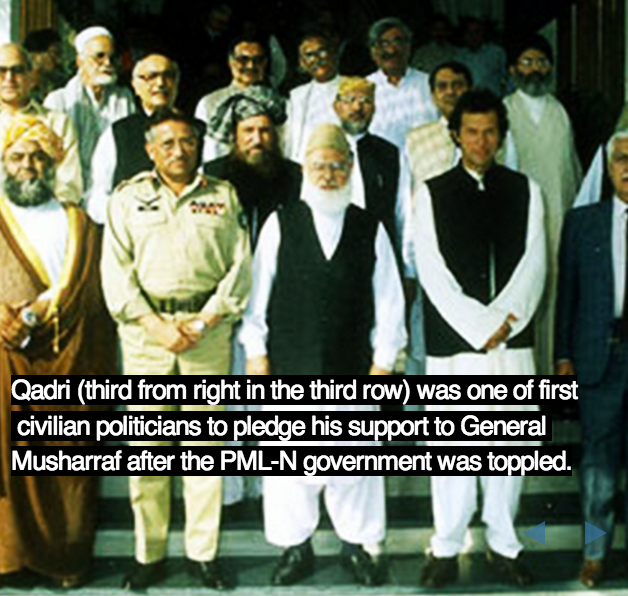
New Laws and Women’s Rights under the Current PPP Regime Fall 2007 was a politically controversial period in Pakistan. Amid the antagonisms raised by the lawyer’s movement to reinstate Chief Justice Iftikhar Chaudhry the previous summer,27 renewed concerns about Musharraf’s constitutional legitimacy to contest the presidential election, and the return of both Benazir Bhutto and Nawaz Sharif, leaders of the two largest political parties in Pakistan in advance of the upcoming elections, new initiatives to promote women’s rights were set aside. On November 3, 2007, Musharraf issued a proclamation of emergency and suspended the 1973 constitution. This move proved to be his undoing, and he had resigned from the army by the end of the month (though he retained his position as president). Benazir Bhutto was assassinated the next month, on December 27, leaving a political void and postponing the January 2008 elections to February. Ongoing political crises have important ramifications for promoting laws to ensure women’s rights. Many of the legal reforms of the late 2000s clearly counter what the majority of Islamist political groups argues is necessary to secure women’s rights. These groups would agree that studying the Qur’an and the sunnah and following the dictates of Islam more closely is valuable for women, and that anything more may expose them to ideas that are shirk (unacceptable beliefs) and disrupt households and the wider community. In interviews I conducted in Islamabad in 2008 at the al-Huda Centre, which provides education to women consistent with ideas that most political Islamist groups would support, its staff were quite clear about their views on protecting women’s rights.28 These rights include the right to love as a daughter and a wife, the right of inheritance, and the right to learn (to gain knowledge), which, as laid out in the hadith, is an obligation of every Muslim. These various groups emphasize reinforcing traditional norms of propriety and female subservience over debating women’s other rights within their communities. In contrast, soon after coming to power in February 2008, the PPP government declared that it would promulgate a national domestic violence act and address sexual harassment at the workplace. Women’s rights activists were heartened when the national assembly passed.

The Domestic Violence (Prevention and Protection) Bill 2009 on August 4, 2009, but were soon dismayed that the Senate did not take up the bill for discussion in a timely manner and allowed it to expire. Nearly three years later, in late February 2012, Senator Nilofar Bakhtiar reintroduced the identical bill, now termed the Domestic Violence (Prevention and Protec-tion) Act 2012, and it passed with support from all political parties represented in the upper house, including the Jamiat Ulema-i-Islam-Fazl (JUI-F), which had earlier deferred the initial bill in the Senate that had caused it to lapse.29 The twenty-eight clauses of the bill are comprehensive. They state that domestic violence includes “all intentional acts of gender-based or other physical or psychological abuse committed by an accused against women, children, or other vulnerable persons, with whom the accused person is or has been in a domestic relationship.” To add some teeth to the bill, the clauses outline specific financial and penal penalties for committing acts of abuse, some of which are defined as assault in the Pakistan penal code, including “use of criminal force, criminal intimidation, economic abuse, entry into an aggrieved person’s residence without his or her consent, harassment, ‘mischief’ against property, physical abuse, stalking, sexual abuse, verbal and emotional abuse, insults or ridicule,” as well as “willful or negligent abandonment of the aggrieved person,” wrongful confinement, and “other repressive or abusive behavior … where such conduct harms or may cause imminent danger or harm to the safety, health, or well-being of the aggrieved person.”30 Many longtime women’s rights activists celebrated the bill’s passage, echoing Khawar Mumtaz of Shirkat Gah when she said, The bill is significant. First, it acknowledges the incidence of domestic violence. Secondly, it recognizes that it can no longer be ignored or remain invisible. For too long, treating domestic violence as a private affair has given protection to perpetrators of violence and has led to victimization of women. The passage of the bill is a measure of success of women’s advocacy.31 The bill, however, only applies to a second act of violence, making it essentially legislation that results in a protection order when a first act of violence is reported. As Maliha Khan, another women’s rights activist in Pakistan, points out, to effectively deal with this social evil, it is vital that an act of domestic violence be punished with imprisonment and/or fine at the first instance, not after a breach of protection orders.32 Even more problematic is a clause in the bill—section 25—inserted much later, shortly before the bill came up for the vote, stating that in the event of a “false accusation,” an individual claiming assault and unable to prove it could face imprisonment of up to six months and a hefty fine (PKR 50,000). The problematic nature of this clause lies in the basis of gendered power in Pakistan itself. Few women, regardless of economic status, will break through cultural ties and other social barriers and lodge a complaint of domestic violence in a court. For a woman who finds the wherewithal to do so, the threat that she may not be able to prove her case may serve as a powerful constraint. It is not just the fear of imprisonment, associated with a loss of honor, or having to pay a fine with funds she likely does not have, as most women in the country have limited access to capital. For most women, navigating the legal system is intimidating enough. The legislation thus speaks volumes regarding the difficulties in legally empowering women in Pakistan. It would be sufficient for a woman to lose her case if she could not prove the harassment, but this legislation places women in the precarious position of possibly going to jail as well. It would certainly encourage more women to lodge such complaints if they were allowed just to lose their cases. The Council of Islamic Ideology criticized the initial bill in September 2009, citing it as “discriminatory” and offering police an opportunity to violate the “sanctity of home” and encourage divorce. I queried its then chairperson, Dr. Khalid Masud, as to the basis of the council’s dispute with the bill. He asserted that he personally found nothing in it that was antithetical to Islam, but some council members opposed it on political and ideological grounds.33 Despite the bill’s limitations, however, it is another stepping stone on the path of strengthening judicial safeguards to ensure women’s rights. Khawar Mumtaz underscored the importance of passing such legislation when she said, in reference to the bill, that laws are important for setting standards and defining what is acceptable in society. Whatever fate awaits the new law will also depend on how much people turn to it for protection. But once it is in the statute books, the option of invoking it becomes available.34 There is evidence of this in Pakistan’s preparing to file its CEDAW report by finally revising the draconian Hudood Laws. The act of being raped is no longer a crime in Pakistan. While the law’s modification has neither prevented rapes from occurring or suddenly transformed inflexible perceptions of women as a man’s property—perhaps this is too much to expect in such a short time—it has lifted the constraints on women of charging perpetrators with rape. A second initiative, unanimously passed in the national assembly on January 21, 2010, and signed into law eight days later, is the Protection against Harassment for Women at the Workplace Act 2009. This law makes provisions to protect women against sexual harassment in public spaces. The need for such protection is underscored by a 2007 survey showing that 78 percent of working women had been sexually harassed on the job; the figure soared to 91 percent among domestic workers.35 Probably every Pakistani woman has been harassed at least once in public.36 Encouragingly, the legislation further requires all public and private organizations to establish an internal code of conduct at the workplace, with complaint and appeals mechanisms aimed “at establishing a safe, working environment, free of intimidation and abuse, for all employees.”37 It includes penalties for management not instituting such a code: they can be prosecuted and fined up to PKR 100,000. The accompanying amendment to Pakistan’s penal code—Criminal Law (Amendment) Act 2009—recognizes that sexual harassment occurs in public places such as markets and parks as well as in workplaces and in the home, and occurs outside of stipulated employment hours. While the first clause addressing insulting modesty is explicitly for women,38 the second clause is not gender specific.39 This may signal a societal shift on thinking about sexual harassment because legal assurances and penalties for breaking the law now exist that can support awareness campaigns about sexual harassment and educate women about their rights to prosecute this kind of discrimination and persecution.40 Two additional recent bills modifying the Pakistan penal code and the code of criminal procedure have brought further progress in legally empowering women in Pakistan. Passed in December 2011, the first rectifies the abandonment of the Anti-Women Practices Bill in 2009 by listing specific punishable offenses against compelling women to marry, especially “in consideration of settling a civil dispute or criminal liability,” including wanni and swara, as well as depriving women from inheriting property, facilitating a woman marrying the Qur’an, and other “anti-women practices.” The second bill, commonly referred to as the acid-throwing legislation, specifically cites penalties for causing harm or disfigurement by using a “corrosive substance,” punishable by long imprisonment and fines of up to a million rupees.41 Another act of legislation promises to make perhaps the greatest difference of all to effect women’s rights and empower them in the future: the elevation of the National Commission on the Status of Women (NCSW) in early February 2012. The NCSW has been granted greater administrative autonomy to review laws, make recommendations, liaise with provincial governments, and overall gain greater scope, funding, and effect in redressing violations of women’s rights. As important as the recent developments in strengthening women’s rights are, however, the social costs of militarism and extensive violence and destruction that Pakistan has been experiencing is foundational to any discussion of the role of legal reform in ensuring women’s rights. As well as polarizing the country, the situation threatens to undermine state policies concerned with eliminating discrimination against women and the small gains in empowering women made thus far. The Tehrik-e Taliban Pakistan42 and other militant groups are pressuring Pakistan’s government to compromise on women’s rights in return for political accommodations. Few people are able and willing to champion the cause of women’s rights in Pakistan today and pressure the federal government not to capitulate to such irredentist demands. Promoting Women’s Rights and Gender-Responsive Policies and Institutions It is one thing for states to pass laws to promote women’s rights; the true test of commitment to rectifying inequities and injustice comes with those laws’ implementation. Pakistan is navigating the first phase with mixed results. Women no longer risk being charged with a crime for being raped, and efforts are under way to ensure that women can travel to and be employed at workplaces without major harassment. But terrorists continue to attack girls’ schools and seek to limit women’s actions and rights in very violent ways. Women now have the right to go to a court to contest custody of children, but powerful, wealthy ex-husbands still invariably prevail. In a surprising turn of events, the Federal Shariat Court recently declared four sections of the Protection of Women Act un-Islamic and therefore unconstitutional. Drafting new legislation to ensure women’s economic rights and opportunities to earn an income will certainly be controversial, as the issues of women’s mobility and economic self-sufficiency remain highly contested social terrains. Women’s economic participation in Pakistan is among the lowest in the world for a variety of reasons. I learned firsthand many of the challenges confronting poor women in Pakistan to earn an income and help feed their families when I conducted field research two decades ago for my book Walls within Walls, chronicling the lives of working women in the Old City of Lahore.43 These women taught me then that many of them had to work within their homes, hiding the fact that they earned money doing piecework because local mores would condemn their husbands if others knew they were living off the labor of their wives’ hands. In addition, when women are entitled to inherit land, it often does not result in a title in their name and in land that they control. This reality seems to be particularly acute for uneducated women, a group legally referred to in Pakistan as pardanashin ladies.44 New draft legislation aimed at rectifying the inequalities women face in retaining inherited land is now being written. This should extend the demarcation of women’s rights of inheritance as well as their right to buy and maintain property in their own names. It is ironic that it remains a problem in Pakistan for banks to accept the signature of a female witness in financial transactions—a result of the Law of Testimony—when the head of Pakistan’s central bank was, until recently, a woman.45 That legislation strengthening women’s rights under way now is important because courts are beginning to reverse a number of earlier rulings that had held up the loss of land by illiterate, ill-experienced women. Case law from the past three decades, particularly in this century, has suddenly begun to ensure the rights of pardanashin women.46 Many of these cases are being fought by the women’s descendants for reinstatement of land that had been in her name. Even “semi-illiterate” women have been deemed entitled “to the protection of law governing such ladies” because of the “disabilities which are suffered by people living a life in seclusion” unless it can be proven that “she understood [the] nature and effect” of her actions in signing away land.47 By reversing a wrong—that those conversant with the legal system could take advantage of women who had never engaged with the system before—the courts are initiating an exciting orientation toward the provision of women’s economic rights. These cases, however, take years to contest, as judges’ caseloads are huge. Ironically, to rectify the injustice of a pardanashin woman’s land having been taken away from her, her descendants must be both legally savvy and financially able to navigate the judicial system But judicial advances are the work of individual jurists; there is no new institutional initiative within the legal system to ensure women’s economic rights, aside from various studies undertaken by the National Commission on the Status of Women and their subsequent recommendations. The Report of the Working Group on Women, Development & Empowerment for Pakistan’s draft Tenth Five-Year Plan (now shelved indefinitely) proceeds from a rights-based discourse when it argues that the inability of the nondemocratic state to deliver [women’s] rights have weakened its legitimacy and allowed informal, custom-based systems to thrive. Meanwhile, nonstate actors have filled in the vacuum with their own regressive, discriminatory ideologies. . . . There is an urgent need to reengineer the overall national policies, institutions and their cultures, and the national budget so that these are more gender responsive.48 This critical initiative must focus on the courts themselves. The executive and legislative branches of government can promulgate laws, but mechanisms to implement those laws must be readily available in the judiciary, especially in the lower courts. Ideally, a separate court should be established within the judiciary for family law cases involving women, notably to adjudicate matrimony, custody, guardianship, and disinheritance. The judiciary must recognize that it is against the public interest for a woman who owns land to divest her interest in the land to a male relative. Enabling a woman to win a custody case is irrelevant if her children are grown up by the time the case is heard; today, it is common for such cases to linger for years. The issue here is the availability of a forum. There are not enough judges and no state venues outside of what already exists. Judges’ caseloads must be reduced so they can attend to such cases in a reasonable period. A special fund could be established to support a legal aid system for addressing this issue. These funds need not go to the government of Pakistan; they could be available to women who must learn to navigate Pakistan’s legal system for the first time. In addition, awareness of new laws must be raised to improve their enforcement. There is a dire need for public information campaigns informing women of their rights under the new sexual harassment legislation as well as other laws. Subordinate judiciary judges also must know about the new legislation affecting women’s rights in Pakistan. Finally, the reforms must be a separate, mandatory topic at the Federal Judicial Academy so all new judges are aware of them. Far more remains to be done, including addressing the problem of human trafficking. Human rights groups have commended Pakistan for passing its Prevention and Control of Human Trafficking Ordinance in 2002, but the state primarily has paid attention to workers smuggled abroad illegally for employment and on children trafficked as camel racers to the Middle East. There has been scant attention paid to the trafficking of women for prostitution. Advocates argue that while the Women’s Protection Act could be used to prosecute traffickers, laying out clear safeguards is essential to ensure that women do not live in fear of kidnapping and trafficking for either internal or external prostitution. Amendments to Pakistan’s penal code have prohibited “sexual advances,” but do not include sexual trafficking, a concern in the larger arena of harassment that must be addressed.49 The above arguments can be encapsulated in the following recommendations for the Pakistani government: • Address ways to implement recently passed laws that strengthen women’s rights. • Draft new legislation to ensure women’s economic rights and opportunities to earn an income. • Ensure that women can control inherited land. • Improve knowledge and enforcement of laws. • Develop new legislation explicitly addressing the trafficking of women for prostitution. 13 Ways must be found to bring together advocates of Pakistan’s two contradictory political enterprises—prioritizing global rights for women and a closer adherence to Islamic precepts—to find accommodations that not only benefit women in Pakistan but create a consensus among Pakistanis that has eluded the nation thus far. Moving further in legally empowering women in Pakistan today is a necessary condition to secure a healthy, prosperous, and viable future for the country overall.
 Of Related Interest • Women and War: Power and Protection in the 21st Century edited by Kathleen Kuehnast, Chantal de Jonge Oudraat, and Helga Hernes (2011) • How Pakistan Negotiates with the United States: Riding the Roller Coaster by Howard B. Schaffer and Teresita C. Schaffer (2011) • Lessons from Women’s Programs in Afghanistan and Iraq by Kathleen Kuehnast, Manal Omar, Steven E. Steiner and Hodei Sultan (Special Report, March 2012) • Who Controls Pakistan’s Security Forces? by Shuja Nawaz (Special Report, December 2011) • Gender, Conflict and Peacebuilding by Kimberly Theidon and Kelly Phenice with Elizabeth Murray (Peaceworks, September 2011) • Reforming Pakistan’s Police and Law Enforcement Infrastructure: Is It Too Flawed to Fix? by Hassan Abbas (Special Report, February 2011) • The Other Side of Gender: Including Masculinity Concerns in Conflict and Peacebuilding by Kathleen Kuehnast and Nina Sudhaker (Peace Brief, January 2011)
Of Related Interest • Women and War: Power and Protection in the 21st Century edited by Kathleen Kuehnast, Chantal de Jonge Oudraat, and Helga Hernes (2011) • How Pakistan Negotiates with the United States: Riding the Roller Coaster by Howard B. Schaffer and Teresita C. Schaffer (2011) • Lessons from Women’s Programs in Afghanistan and Iraq by Kathleen Kuehnast, Manal Omar, Steven E. Steiner and Hodei Sultan (Special Report, March 2012) • Who Controls Pakistan’s Security Forces? by Shuja Nawaz (Special Report, December 2011) • Gender, Conflict and Peacebuilding by Kimberly Theidon and Kelly Phenice with Elizabeth Murray (Peaceworks, September 2011) • Reforming Pakistan’s Police and Law Enforcement Infrastructure: Is It Too Flawed to Fix? by Hassan Abbas (Special Report, February 2011) • The Other Side of Gender: Including Masculinity Concerns in Conflict and Peacebuilding by Kathleen Kuehnast and Nina Sudhaker (Peace Brief, January 2011)
Prime Minister’s Youth Programme is a revolutionary programme for the socio-economic development of youth, in a bid to combat soaring unemployment in the country. It has a broad canvas of schemes aimed at enabling youth and poor segments of population to: Get good employment, opportunities, Secure economic empowerment, Acquire skills needed for gainful employment, Have access to higher education and IT tools, Access to on-the-job training/internship for young graduates to improve the probability of getting a productive job.
A small group of people on Thursday staged a protest outside the residence of former Muttahida Qaumi Movement (MQM) leader Mustafa Kamal.
The protesters were holding placards which read “we have become insecure due to politics in the Defence Housing Authority.
They urged the former Karachi mayor to refrain from politics in the area.


































































One thought on “Moving Forward With The Legal Empowerment Of Women In Pakistan”